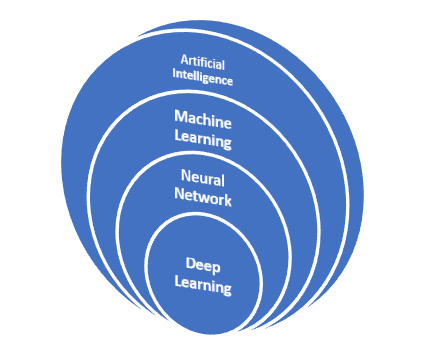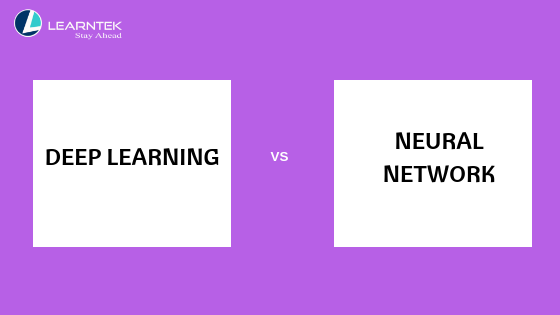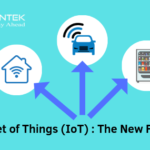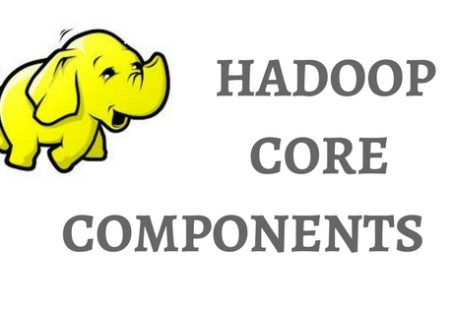Deep Learning and Neural Network : You can think of it – how a child learns through constant experiences and replication. Deep learning and Neural Network could provide unexpected business models for companies.
We know that computers are better than people at crunching series of numbers or faster processing of monotonous job, but what about tasks that are more complex? How do you teach a computer what a Dog looks like? Or how to drive a car? Or how to play a complex strategy game? Or make predictions about the stock market?
These are some of the most difficult tasks in artificial intelligence, far outstripping the capabilities of normal machine learning techniques. In these cases, computer scientists turn to neural networks and deep learning.
1.Deep Learning :
Deep learning, also known as the deep neural network, is one of the approaches to machine learning. Deep learning is a special type of machine learning. Deep learning involves the study of Artificial Neural Networks and Machine Learning related algorithms that contain more than one hidden layer. A deep learning model is designed to continually analyse data with a logic structure similar to how a human would draw conclusions. Deep learning involves mathematical modelling, which can be thought of as a composition of simple blocks of a certain type, and where some of these blocks can be adjusted to better predict the final outcome. Deep learning is a subfield of machine learning. While both fall under the broad category of artificial intelligence, deep learning is what powers the most human-like artificial intelligence.
2. Neural Network:
Neural networks are a set of algorithms, modelled loosely after the human brain, that are designed to recognize patterns. Neural networks help us cluster and classify. Within the field of machine learning, neural networks are a subset of algorithms built around a model of artificial neurons spread across three or more layers. They interpret sensory data through a kind of machine perception, labelling or clustering raw input. The patterns they recognize are numerical, contained in vectors, into which all real-world data, be it images, sound, text or time series, must be translated. Neural networks can also extract features that are fed to other algorithms for clustering and classification; so you can think of deep neural networks as components of larger machine-learning applications involving algorithms for reinforcement learning, classification and regression.

3. Applications of Neural Network:
Image Processing and Character recognition: Neural Networks are playing a big role in image and character recognition. Character recognition like handwriting has lot of applications in fraud detection (e.g. bank fraud) and even national security assessments. Image recognition is an ever-growing field with widespread applications from facial recognition in social media, cancer detention in medicine to satellite imagery processing for agricultural and defence usage.
Signature Verification Application: Signatures are one of the most useful ways to authorize and authenticate a person in legal transactions. With these feature sets, we have to train the neural networks using an efficient neural network algorithm.
Human Face Recognition :It is one of the biometric methods to identify the given face. It is a typical task because of the characterization of ‘non-face’ images.
Forecasting: Forecasting is required extensively in everyday business decisions. Forecasting includes sales, financial allocation between products, capacity utilization, in economic and monetary policy, in finance and stock market. More often, forecasting problems are complex, for example, predicting stock prices.
Character Recognition: It is an interesting problem which falls under the general area of Pattern Recognition. Many neural networks have been developed for automatic recognition of handwritten characters, either letters or digits.
Speech Recognition: Speech occupies a prominent role in human-human interaction. Therefore, it is natural for people to expect speech interfaces with computers.
4. Applications of Deep Learning:
Self-driving cars: Companies are on the way to launch self-driving cars. They are using different digital sensor systems and to do that companies generally start out by training algorithms using a large amount of data.
Healthcare Sector: Breast or Skin-Cancer diagnostics? Mobile and Monitoring Apps? or prediction and personalised medicine on the basis of Biobank-data? AI is completely reshaping life sciences, medicine, and healthcare as an industry.
Voice Search & Voice-Activated Assistants: Google Home, Alexa, Cortona, Siri are already assisting large number of users in their personal life. They are the result of deep learning is voice search & voice-activated intelligent assistants.
Deep learning is automatically Adding Sounds To Silent Movies
Automatic Text Generation and Handwriting Generation: Using deep learning, corpus of text is learned and from this model new text is generated, word-by-word or character-by-character. The model is capable of learning how to spell, punctuate, form sentences and even capture the style of the text in the corpus.
Image Recognition: Another popular area regarding deep learning is image recognition. It aims to recognize and identify people and objects in images as well as to understand the content and context.
5.Difference Between Deep Learning and Neural Network :
| Neural Network | Deep Learning |
|---|---|
| It is a beautiful biologically-inspired programming paradigm which enables a computer to learn from observational data | It is a powerful set of techniques for learning in neural networks |
| Neural networks make use of neurons that are used to transmit data in the form of input values and output values. They are used to transfer data by using networks or connections. | Deep learning is related to transformation and extraction of feature which attempts to establish a relationship between stimuli and associated neural responses present in the brain. |
| Application areas for neural networks includes system identification, natural resource management, process control, vehicle control, quantum chemistry, decision making, game playing | Application of deep learning includes Automatic speech recognition, Image recognition, visual art processing, Natural language processing, drug discovery and toxicology, customer relationship management, recommendation engines |
| Neural Network has two layers | Deep learning, you can have many layers |
6. Advantages of Neural Network:
- A neural network learns and does not need to be reprogrammed.
- A neural network can be implemented in any application.
- If any element of neural networks fails, it can continue without any problem by their parallel nature
- A neural network can perform tasks that a linear program cannot.
- A neural networks requires high processing time for large neural networks.
Deep Learning and Neural Network Related Blogs :
Machine Learning Vs. Deep Learning: Here’s what you must know






